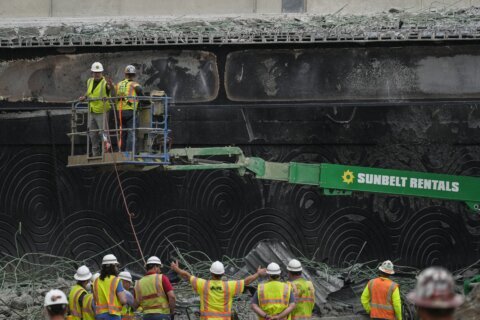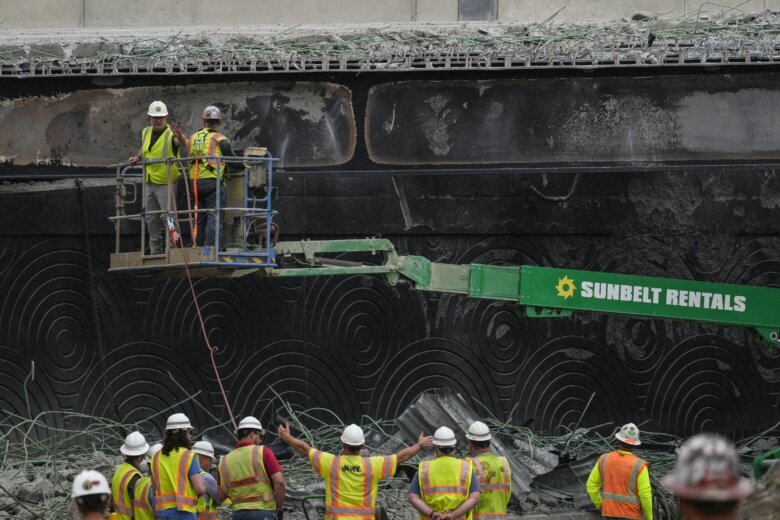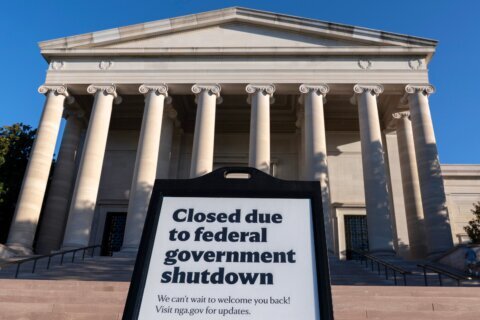
The collapse of Interstate 95 in Philadelphia has left the city rushing to repair a major stretch of the heavily traveled interstate at a rapid pace. While the D.C. region is far removed from the impacts of that road collapse, one thing is for sure: it’s not out of the realm of possibility that a similar traffic event could happen around here.
“What happens is accidents happen. So, yes, it is something that could happen in the D.C. region,” said Kim Roddis, a professor in Civil and Environmental Engineering at George Washington University.
Roddis said tackling a project such as a collapsed road requires cooperation by all branches of government, and how quickly the work can be done all depends on how much damage there is and where it is located.
She said if a small part of the American Legion Bridge were to come down, for example, newer techniques can be used to make timely repairs. But if the mid span were to collapse that wouldn’t be the case.
“That’s a long span in there that, under best circumstances, you’re not going to be able to replace that in weeks,” Roddis said. “Under best circumstances, you’re talking about many months.”
The American Legion Bridge is the responsibility of the state of Maryland. The Maryland State Highway Administration declined an interview to discuss how the state is prepared to respond to major incidents like those in Philadelphia.
Ellen Kamilakis, a spokesperson for the Virginia Department of Transportation, said the state has emergency plans for responding to such a situation, but every event is different.
“It would be taking a look at what needed to happen in that scenario and then really going after what would be specific to that kind of fix,” Kamilakis said.
She said the state has options available in some situations that could help speed up the rebuilding process. This includes temporary, prebuilt bridges moved out to the site and mostly ready to be installed.
“These temporary bridges — you know, temporary is sort of a mischaracterization, because they last for quite a while, and they really don’t degrade as fast,” Kamilakis said.
VDOT used one such bridge in 2021 to replace the Old Colchester Bridge over Pohick Creek after an inspection led to the bridge being closed.
According to Roddis, there are also temporary bridges, which can be mostly assembled near where a bridge needs to be replaced and put into place using special machinery.
In Philadelphia, Roddis said, we are seeing an innovative approach to fixing the collapsed portion of the interstate. She said the use of recycled glass aggregate as backfill has been seen in Europe but not done much in the United States. This method also requires fewer truckloads of backfill from a local supplier.
“So, they have a relatively short distance to ship that and then they’re putting in a temporary fix, but then paving over that backfill,” Roddis said.
Roddis said the D.C. area benefits from making sure everyone is on the same page in the event of an issue that disrupts traffic in the region.
“We have to get the federal government, D.C. government, Maryland government and Virginia government all working well together. We do so very often,” Roddis said.
Kamilakis said that communication is there, especially when it comes to the initial response to an incident. She cited a situation back in 2019 when a tanker truck hauling gasoline wound up on its side inches away from the American Legion Bridge.
During that response, first responders from not only Virginia but also Maryland, D.C. and the federal government responded to help. The truck, in that case, was quickly stabilized and never caught fire.
We have seen serious incidents on other important commute routes in the region, among them the collapse of the DC-295 pedestrian bridge in 2021. In that case, D.C. was able to get the road reopened in hours.









